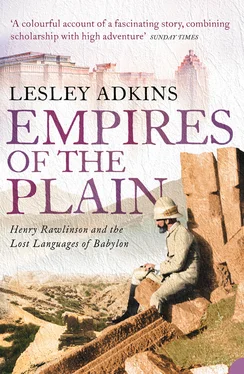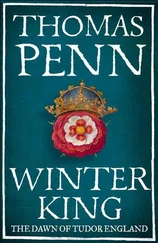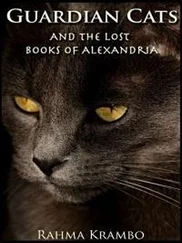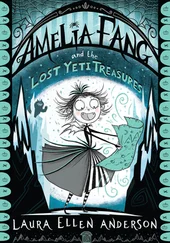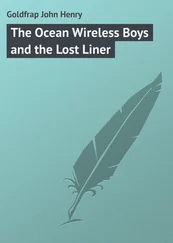In mid-January Rawlinson and some of his fellow officers met Muhammed Shah for the first time in the main reception room of the palace, but Rawlinson’s verdict, recorded in his private journal, was damning: ‘[he] has little appearance of Eastern sovereignty about him. Instead of a fine, bold, manly bearing, with the gleam of intellect upon his brow … he possesses a gross, unwieldy person, a thick, rapid, unimpressive utterance, an unmeaning countenance, and a general bearing more clownish and commonplace than is often met with even in the middle ranks of Persian society. There is in his appearance no spark of grace, dignity, or intelligence.’ 22
By contrast, the palace reception room was considered by Rawlinson to be ‘probably the most splendid apartment in Persia’, 23 the focus being the magnificent seventeenth-century Peacock Throne with its 26,000 emeralds, rubies, diamonds and pearls. Commissioned by the Mughal Emperor of India, Shah Jehan, for his Red Fort at Delhi, it had been brought back to Persia by Nadir Shah in 1739 as part of the treasure he had looted from the city after massacring some 20,000 of its citizens. Muhammed Shah, who had chosen not to sit on the throne but on more comfortable velvet cushions, firmly announced his wish ‘to have an army of 100,000 disciplined troops, and – Inshallah – to revive the days of Nadir in Iran. Otherwise the conversation related chiefly to the wonders of European science – balloons, steam guns, Herschel’s telescope, and the subject of aerolites were successively touched upon.’ 24
The coronation of the new Shah took place on the last day of January, and those attending included ‘the chief executioner and his establishment, who, with their very red robes and turbans and axes of office, presented a very imposing appearance’. 25 Rawlinson had not changed his opinion of the Shah, who ‘waddled in his usual undignified manner across the chamber to the foot of the throne, clambered up the steps, and sat himself down at the further end, leaning against the richly carved marble back. His appearance was rendered more ludicrous on this occasion than I ever previously beheld it, by his being obliged to keep one hand up at his head in order to preserve the ponderous top-heavy crown, which he wore, in its place … It appeared to be made of white cloth, and owed its weight, of course, to the vast quantity of jewels with which it was adorned.’ 26
Rawlinson, newly promoted to Lieutenant, evidently impressed the Shah, however, as he was chosen to raise and train troops from Kurdish tribes in the province of Kermanshah for the Governor Bahram Mirza, who was the Shah’s own brother. Accompanied by one other European – Sergeant George Page – Rawlinson left Tehran on 10 April for the town of Kermanshah (today renamed Bakhtaran), 300 miles to the south-west in the Zagros mountains. The following day was his twenty-fifth birthday and he made an extremely brief journal entry: ‘The year has evolved and brought no material change, either in my fortune or my feelings.’ 27
Kermanshah was on the main trade route between Tehran and Baghdad, in a region rich in ancient rock-cut reliefs and inscriptions of varying dates. Just over halfway there, Rawlinson passed the large town of Hamadan at the foot of Mount Elwand (or Alvand), once the ancient city of Ecbatana, which was founded as the capital of the empire of the Medes in the eighth century BC. At an altitude of 5,900 feet in the mountains, Ecbatana controlled the major east – west route from the plains of Mesopotamia to the central Iranian plateau. Famous in ancient times for its vast wealth and architectural splendour, Ecbatana became part of the Persian Empire when it was conquered in 550 BC by King Cyrus the Great, who used it as his summer capital. Passing through this area so rich in the remains of ancient and largely unknown civilizations, Rawlinson was in his element, appealing as it did to his flair for exploration and linguistics, and his growing interest in ancient history.
A detour was made to find cuneiform inscriptions Rawlinson had heard about a few miles away along a wooded gorge of Mount Elwand, aware that other travellers had seen them but unaware that copies had been done as recently as 1827 and subsequently given to Friedrich Edward Schulz. A German professor of philosophy, Schulz had himself been recording inscriptions and other antiquities for the French government in the Lake Van area, until he was murdered by Kurds in 1829. His papers passed to Antoine-Jean Saint-Martin, an Oriental scholar in Paris who had been a great friend of Jean-François Champollion, the decipherer of Egyptian hieroglyphs, until politics tore them apart. Although Saint-Martin intended to publish these inscriptions from Mount Elwand, he died of cholera at the age of forty-one in 1832, only months after Champollion’s death. Saint-Martin’s papers passed to Eugène Burnouf, another Oriental scholar in Paris who had replaced Champollion as a member of the Academy of Inscriptions and became Professor of Sanskrit at the College of France. While Rawlinson was copying the Elwand inscriptions, Burnouf was preparing them for publication.
In the Elwand Gorge, two adjacent square panels of trilingual cuneiform inscriptions, one slightly higher than the other, had been cut into the steep rock face, praising Ahuramazda (Persian for ‘Great God’) and recording the lineages and prowess of the Persian king Darius the Great in one panel, and his successor Xerxes I in the other. The site became known as Ganj Nameh (Tales of a Treasure) in the belief that the strange inscriptions described the location of a large treasure hidden during the campaigns of Alexander the Great. Rawlinson spent some time carefully copying these inscriptions, unaware that the real treasure they contained were clues to the decipherment of cuneiform, because they were trilingual inscriptions; like those at Persepolis and Bisitun, they had been carved in the three ancient languages of Old Persian, Elamite and Babylonian. Rawlinson later recorded that the ‘first materials which I submitted to analysis were the sculptured tablets of Hamadán [Mount Elwand], carefully and accurately copied by myself upon the spot, and I afterwards found that I had thus, by a singular accident, selected the most favourable inscriptions of the class which existed in all Persia for resolving the difficulties of an unknown character’. 28
Four: The Cuneiform Conundrum
Before the decipherment of cuneiform, stories in the Bible and those of Greek and Roman writers were the only written record of the ancient history of the Middle East. Genesis, the first book of the Hebrew Bible, is an explanation of the origins of heaven and earth, the very name Genesis being derived from the ancient Greek word for ‘origins’. It relates that after the Flood, Noah, his wife, his sons Shem, Ham and Japeth and their wives were the only people in the world. God spoke to Noah and his sons: ‘Be fruitful, and multiply, and replenish the earth’. 1 Noah died at the ripe old age of 950, and his sons had numerous descendants. Nimrod, a great-grandson of Noah, was supposedly the initial ruler of Shinar and Assyria, which made up Mesopotamia, stretching from the Taurus mountains of Anatolia southwards to the Persian Gulf and encompassing much of modern Iraq. Shinar was the Hebrew name for Babylonia (southern Mesopotamia), while Assyria was the name given to northern Mesopotamia. The name Mesopotamia is itself an ancient Greek term, ‘between the rivers’, referring to the Tigris and Euphrates. Genesis records Nimrod as the founder of the first cities after the Flood, including Babel, Nineveh and Calah – better known today as Babylon, Nineveh and Nimrud.
As all the people of the world descended from Noah and his sons, only one language should have been spoken, and so the author of Genesis tried to explain that the confusion of many languages was yet another punishment from God. Of those people who had migrated to Shinar, Genesis records: ‘they said to one another, “Come, let us make bricks, and bake them thoroughly.” And they used brick instead of stone and bitumen for mortar. Then they said, “Come, let us build ourselves a city and a tower whose top reaches to the heavens; and let us make a name for ourselves, so that we are not scattered over the face of the whole earth.” And the LORD came down to see the city and the tower that the sons of men had built. And the LORD said, “Behold, they are one people speaking the same language. This is the beginning of what they will do and nothing they plan to do will be impossible for them. Come, let us go down and confuse their language so that they will not understand one another’s speech.” So the LORD scattered them all over the earth, and they left off building the city. That is why its name was Babel – because the LORD there confused the language of all the earth’. 2 This story refers to the building of the fabled city of Babylon that grew up alongside the Euphrates, 55 miles south of the later city of Baghdad. Although supposedly one of the first cities after the Flood, archaeological excavation has shown that Babylon was not one of Mesopotamia’s oldest cities, but that it only developed around 1800 BC and that there are many older cities along the banks of the Tigris and Euphrates.
Читать дальше
